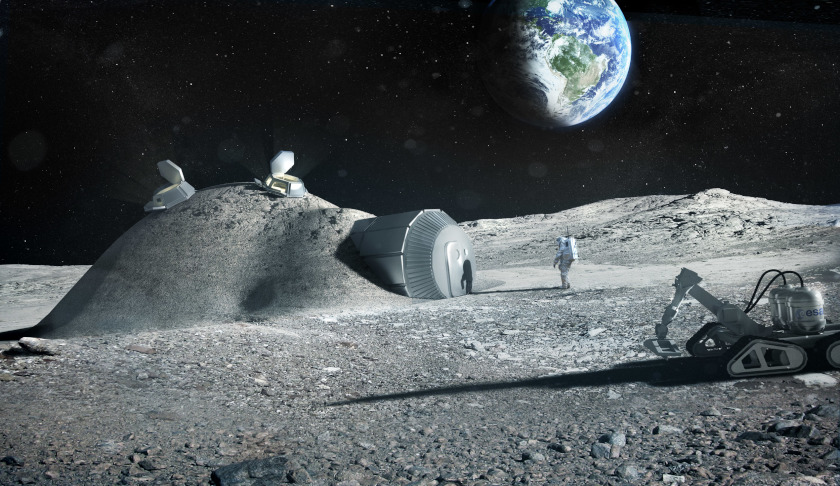This was canvassed in a recent post on The Lowy Institute The Interpreter blog and the answer is no, although international treaties governing space loom
as a potential flashpoint for growing US-China competition.
Starting with Neil Armstrong and Buzz Aldrin in 1969, US astronauts planted several US flags – which remain on the moon – but none claimed the moon for the US in the same way as Captain Cook claimed Australia for Britain back in 1770.
"Exploration throughout history, especially by colonial powers, is associated with the 'planting of the flag'. By this act, explorers, often acting under the orders or sponsorship of a monarch or government, would plant the flag and declare sovereignty, title or ownership over newly discovered lands," wrote analysts Donald Rothwell and Imogen Saunders.
They noted that assertions of title over territory based on acts of discovery remain the subject of dispute to this day and the International Court of Justice was often called upon to rule in such cases.
When Armstrong and Aldrin touched down on the moon in 1969 and planted the flag, the US was a signatory to the 1967 Outer Space Treaty, which says:
"Outer space, including the moon and other celestial bodies is not subject to claims of national appropriation by claim of sovereignty, by means of use or occupation, or by any other means."
Seems pretty clear. Subsequently US Congress passed a law in November 1969, affirming the flag planting was a "a symbolic gesture of national pride in achievement" and not a claim to sovereignty.
The 1979 Moon Treaty goes further, disallowing sovereign claims and also explicitly excluding any property rights by governments or private individuals on any part of the surface, subsurface or natural resources.
"No one, according to the Moon Treaty, can own the moon or any part of it. However, unlike the Outer Space Treaty, the Moon Treaty does not enjoy widespread support. It has only 18 parties, and neither the US nor China have signed up," they said.
That means, regulation of US-China competition over the moon reverts to the Outer Space Treaty, which requires that the moon be used for peaceful purposes.
It forbids military bases or military activities and China and the US would have to offer assistance to each other’s astronauts and bear international responsibility for their national activities on the moon and in outer space.
"What is less certain is whether either country could authorise its private citizens to mine resources from the moon, something that the US has arguably done with respect to asteroids under laws passed in 2015," they said.
"Such approaches sit uneasily with the concept that space – and the bodies and resources within it – are part of the common heritage of humanity."
That’s a concept shared with the law of the sea, which says certain resources and areas should only be used for the benefit of all humanity and not for private or national gain.
"Although the concept certainly underpins much of the Outer Space Treaty, it is not expressly set out in it and this ambiguity may be used to argue private utilisation of the moon is still possible under existing international law," they say.
"All the indicators are that there will be increased strategic competition over space, particularly between the US and China, with the moon looming as a potential flashpoint."

